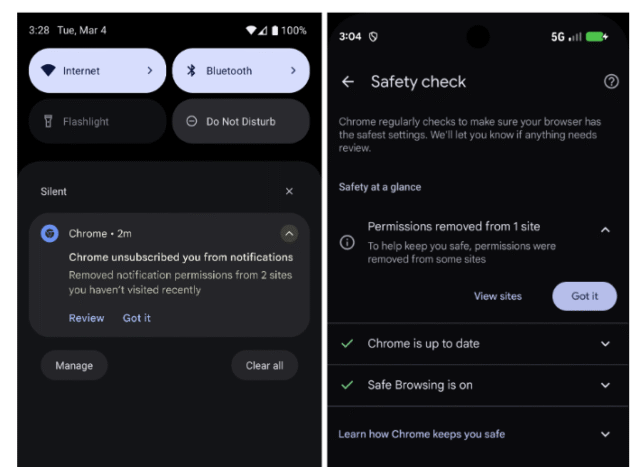Google is cutting off noisy websites in Chrome -- here's how it works

When you visit a new website in a browser like Google Chrome, you may see a small prompt near the address bar asking whether you want to allow notifications. It’s easy enough to click “allow” in the moment, but not always easy to find where to turn those notifications off again later.
For many users, the result is an endless stream of alerts, banners, and prompts that make browsing far noisier than it needs be. Chrome’s latest experiment aims to cut this overload with a feature that automatically removes notification permissions for sites that users no longer engage with.
SEE ALSO: Opera to roll out enhanced native AI features across its flagship and GX browsers for free
Notifications can be useful. They can remind users about messages, updates, or time-sensitive events that matter. However, according to data from the Chrome team, the vast majority of notifications are ignored. In fact, fewer than one percent receive any user interaction, which suggests that many alerts are simply unwanted annoyances.
Announced on the Chromium blog, this new solution will see Chrome quietly revoke notification permissions from websites that send frequent alerts but receive little to no interaction.
Appearing in Chrome on both Android and desktop, the feature extends a system that already governs camera and location permissions through Safety Check, and will only affect those sites that send a high number of notifications but receive little engagement in return.
Installed web apps will be excluded from these changes, so that services which function more like apps will continue to deliver alerts as usual.
By removing authorization from these low-engagement sites, Chrome hopes to strike a balance between convenience and calm.

Allowing Chrome notifications again
Although the process will happen automatically, when Chrome removes a site’s notification permission, it will let the user know. If you want to keep receiving alerts from a specific site you'll be able to easily re-enable them, either through Safety Check or by visiting the website and opting in again.
Users will also be able to to disable the automatic revocation feature entirely, if needs be.
Early tests reportedly show that the change works nicely. Chrome’s internal testing revealed a large drop in unwanted alerts, while not affecting interaction with wanted notifications.
Interestingly, websites that send fewer notifications typically see a rise in user interactions, suggesting that less is indeed more, and a quieter approach may be more effective at keeping visitors interested.
What do you think about Chrome’s new approach to managing noisy notifications? Let us know in the comments.
Image Credit: Aaron Amat / Dreamstime.com
